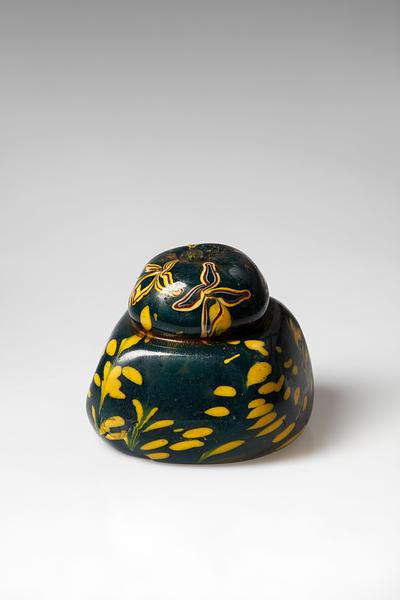At the palaces of India, the tiling on the terraces became uncomfortably hot under the scorching sun. To remedy this, the tiles were covered with light rugs held in place by carpet weights called
mir-i farsh (master of the carpet).
Known almost exclusively from India, carpet weights were made out of many different materials such as metal, rock crystal and marble (
12/2012) during the seventeenth and eighteenth centuries; versions made of Chinese porcelain were imported as well (
5/2019).
This glass carpet weight consists of two pieces of blue-green glass joined while still hot. In terms of shape, the piece is not as refined as many other preserved specimens, which can have complex decorations and shapes inspired by architecture.
However, the floral decorations, made of pressed-in pieces of mainly yellow glass, are unique. Other examples of green Indian glass with yellow splashes and stripes are known (
33/2007), but the carpet weight shown here is distinctive because the decorations are clearly figurative. The flowers on the knob are particularly special, having been made of ‘combed’ glass threads. The combing technique is rare in Indian glass, and even on glass objects from the rest of the Islamic world combed decorations are predominantly nonfigurative (
7/1989).
